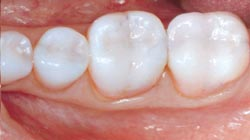When tooth decay creates a cavity problem, the pain you feel will let you know it’s time to get it filled. Get an emergency cavity filling before your pain intensifies, or the dental infection spreads.
Have you been putting off a routine visit to the dentist? Have you started experiencing sudden pain in a tooth while eating or drinking, or even when brushing your teeth? It’s very likely that you have a new cavity and it’s time to look for a dentist’s office where you can get an emergency cavity filling in Little Rock.
How Do I Identify a Possible Cavity?
Bacteria in the mouth renders certain foods into acids that dissolve tooth enamel, leaving small holes or pits of decay in the tooth surface and causing pain. As these holes get deeper, they may make your tooth sensitive to hot, cold, or sweet foods. In this case, cavity fillings will be the best cure for your pain.
What Are My Filling Options?
Whenever you go into your dentist’s office for an emergency cavity filling in Little Rock, you’ll discuss the two types of fillings available to you. Ultimately, the choice you and your dentist make comes down to the final look you prefer.

Silver Fillings – “Silver-colored” fillings have been used by dentists for over 100 years, and are made from a combination of silver, tin, copper and mercury. As the least expensive filling material, they are good for large cavities and those teeth in the back of the mouth. Silver fillings can be completed in one session.

Tooth-Colored Fillings – This type of filling, also known as composite resin, are often used in smaller cavities in either the front or back of the mouth. This is because they match your tooth color, making them less obvious when you laugh or smile. Like silver fillings, tooth-colored fillings can be done in a single dental session.
How Is a Cavity Filled?
After the type of filling has been chosen, your mouth will be prepared for the filling procedure with a local anesthetic to numb the area around the tooth. All signs of decay must then be completely removed from the cavity using a drill or laser.
Once a thorough inspection shows that the decay is gone, your dentist will clean the tooth cavity of any bacteria and foreign materials and examine the cavity’s proximity to your tooth’s root. To protect the nerve, the dentist may first apply a layer of resin in the cavity space before inserting the filling layers. When the final layer of filling has been cured, your dentist will shape the filling by trimming and polishing the new tooth surface so your bite will feel natural after you leave the dentist’s office.
The best way to avoid any kind of tooth pain and cavity fillings is to commit to good dental habits and prevent tooth decay. The key is to have a great relationship with your dentist and make regular cleanings a priority. If the time ever does come when you need to utilize emergency dental services, contact Arkansas Family Dental or call 501-683-8886 to see if an emergency cavity filling will alleviate your pain.


Leave a Reply